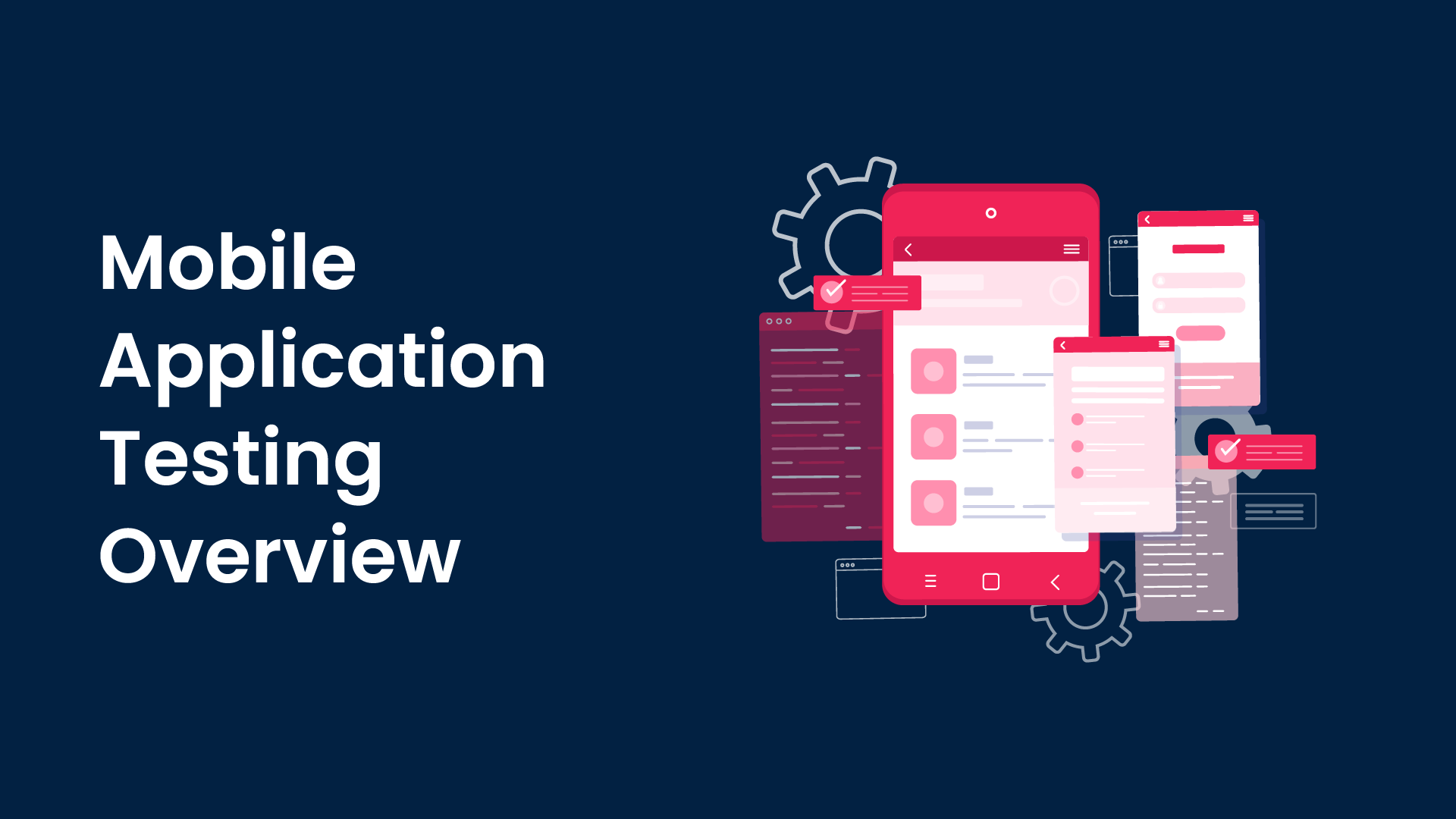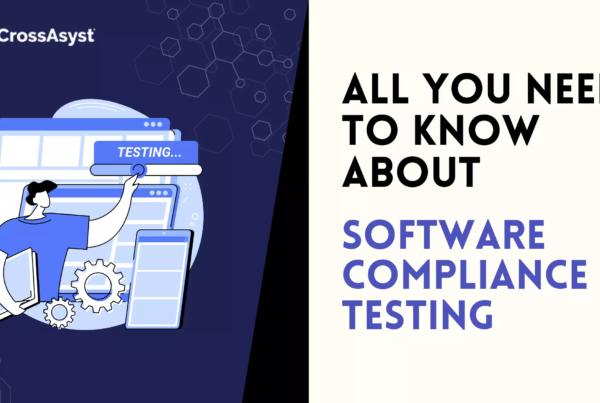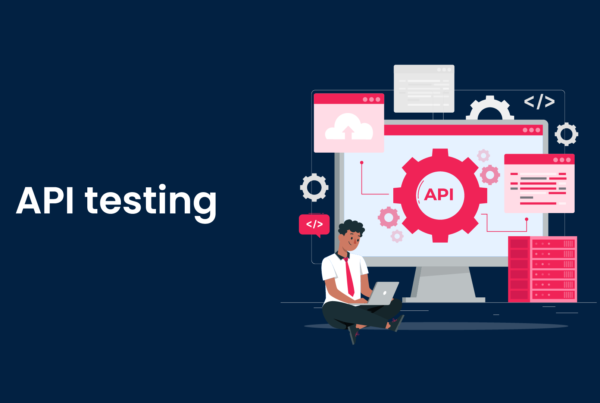Let’s start by trying to put things into perspective. The mobile application market was valued at $228.98 billion in 2023, and is projected to grow at a CAGR of 14.3% from 2014 to 2030. The sheer potential of this industry sector means mobile application developers need to pay close attention to the quality of their products if they are to stay competitive and relevant.
Simply put, mobile application testing needs to be a core priority for these organizations. Let’s get more of an insight into the process itself with this quick overview of mobile application testing.
Table of Contents
Understanding Mobile Application Testing
Mobile application testing encompasses a comprehensive evaluation process aimed at identifying and rectifying bugs, glitches, and usability issues within mobile apps before they reach end-users. The primary objective is to guarantee that mobile apps function seamlessly across a diverse spectrum of devices, operating systems, screen sizes, and network environments.
This multifaceted testing approach is essential due to the unique challenges posed by mobile platforms, necessitating a thorough examination of various factors beyond mere functionality.
Unlike web applications, which primarily operate within browser environments, mobile apps interact directly with the device’s hardware and software components. Therefore, mobile app testing demands meticulous consideration of touch screen interactions, device sensors, and offline functionality.
Touch screen interactions, for instance, encompass gestures such as tapping, swiping, pinching, and multi-touch actions, all of which must be validated to ensure smooth user experiences. Device sensors, including accelerometers, gyroscopes, GPS, and proximity sensors, play integral roles in many mobile applications and require thorough testing to ensure accurate functionality under different conditions.
Additionally, offline functionality, such as data caching and offline access to content, is crucial for apps that need to operate seamlessly without a constant internet connection, necessitating specific testing methodologies to validate reliability and performance.
Furthermore, mobile app testing extends beyond functional validation to encompass usability considerations, such as intuitive navigation, responsive design, and accessibility features. User experience (UX) is paramount in mobile app development, as even minor usability issues can significantly impact user satisfaction and retention.
Therefore, testing must encompass user interface (UI) design elements, ensuring consistency, clarity, and accessibility across various devices and screen sizes.
Mobile app testing involves evaluating performance metrics such as speed, responsiveness, and resource utilization under different scenarios, including varying network conditions and device specifications.
This entails assessing factors like app load times, response to user inputs, battery consumption, and memory usage to optimize performance and enhance user satisfaction.
In essence, mobile application testing is a multifaceted process that goes beyond functional validation to encompass usability, performance, and compatibility testing across a diverse array of devices and environments. By addressing the unique challenges posed by mobile platforms and prioritizing user experience, developers can ensure the delivery of high-quality mobile applications that meet the evolving expectations of end-users.
Why Mobile Application Testing is Critical
Mobile application testing is critical for developers and businesses due to its direct impact on various aspects of app success. Here’s a more detailed look.
Enhancing User Satisfaction and Retention
Thorough testing ensures that mobile apps meet user expectations by delivering seamless experiences. By identifying and rectifying bugs, glitches, and usability issues before release, developers can enhance user satisfaction and encourage long-term app usage.
Preventing Negative Reviews and High Uninstall Rates
Inadequate testing can result in poor user experiences, leading to negative reviews and high uninstall rates. Users have little tolerance for apps that fail to function properly or deliver subpar performance, often abandoning them in favor of alternatives. Comprehensive testing helps mitigate these risks by addressing issues proactively.
Impact on Revenue Generation
Effective mobile application testing directly influences revenue generation for businesses:
1. Loss of Revenue Due to Poor User Experience
Apps with usability issues or performance problems are less likely to attract and retain users, resulting in decreased revenue potential. Users are more inclined to make purchases or engage with apps that offer seamless experiences, making testing essential for maximizing revenue opportunities.
2.Standing Out in the Competitive App Market
With millions of apps available for download across various app stores, competition is fierce. To succeed in this crowded landscape, developers must prioritize delivering flawless user experiences. Comprehensive testing helps differentiate apps from competitors by ensuring high quality and reliability.
Delivering Flawless User Experiences
In the competitive app market, delivering flawless user experiences is essential for attracting and retaining users.
1. Meeting Evolving User Expectations
User expectations are continually evolving, driven by advancements in technology and changing consumer preferences. Mobile application testing enables developers to stay ahead of these trends by identifying and addressing issues that may detract from the user experience.
2. Building Trust and Loyalty
Apps that consistently deliver high-quality experiences build trust and loyalty among users. By prioritizing testing and actively addressing user feedback, developers can cultivate strong relationships with their audience, leading to increased engagement and revenue over time.
Types of Mobile Application Testing
Mobile application testing comprises several types of tests. Let’s delve into what these tests are.
 Functional Testing
Functional Testing
This type of testing focuses on validating the various features and functionalities of the mobile application. It involves systematically testing each function to ensure that it behaves as intended and meets the specified requirements. Functional testing ensures that all aspects of the app, from basic functionalities to more complex operations, work smoothly and reliably.
Usability Testing
Usability testing evaluates the user interface (UI), navigation, and overall user experience (UX) of the mobile application. It involves gathering feedback from real users to assess how easy and intuitive the app is to use. Usability testing helps identify any interface issues, navigation challenges, or design flaws that could hinder user satisfaction and adoption.
Performance Testing
Performance testing assesses the app’s speed, responsiveness, and stability under various conditions, such as different network speeds, device specifications, and user loads. It aims to ensure that the app performs optimally and delivers a smooth experience to users, even under challenging circumstances. Performance testing helps identify bottlenecks, memory leaks, or other issues that could degrade the app’s performance.
Compatibility Testing
Compatibility testing ensures that the mobile application works seamlessly across different devices, platforms (iOS, Android), and screen sizes. It involves testing the app on various devices, operating systems, and screen resolutions to identify any compatibility issues or inconsistencies. Compatibility testing helps ensure a consistent user experience across a wide range of devices and platforms.
Security Testing
Security testing identifies vulnerabilities and weaknesses in the mobile application’s code, infrastructure, or data handling processes. It aims to protect user data from potential threats such as unauthorized access, data breaches, or malicious attacks. Security testing involves various techniques, including penetration testing, code review, and encryption analysis, to identify and address security risks effectively.
Regression Testing
Regression testing verifies that recent changes or updates to the mobile application haven’t adversely affected existing functionalities. It involves retesting the app’s previously validated features and functionalities to ensure that they still work correctly after any modifications. Regression testing helps prevent the introduction of new bugs or issues while implementing changes or updates to the app’s codebase.
Mobile Application Testing Strategies
Effective testing strategies are essential for ensuring thorough and efficient mobile app testing.
Here are some mobile application testing strategies.
Automation vs. Manual Testing
This involves finding the right balance between automated testing, which is suitable for repetitive tasks and scenarios that can be scripted, and manual testing, which is necessary for scenarios requiring human judgment and intuition.
Automated testing tools and frameworks are employed to execute test scripts, validate functionality, and perform regression testing efficiently. Conversely, manual testing involves human testers exploring the application’s features, identifying edge cases, and evaluating the user experience.
Striking a balance between automation and manual testing ensures thorough coverage of test scenarios while optimizing testing efforts and resources.
Continuous Testing Approaches
Continuous testing involves integrating testing activities throughout the development process, from initial code commits to deployment and beyond. By automating tests and running them continuously as code changes are made, teams can identify issues early in the development lifecycle, facilitating rapid feedback and iteration.
Continuous testing helps ensure that software remains reliable, stable, and meets quality standards throughout its evolution, ultimately reducing the risk of late-stage defects and enhancing overall product quality.
Beta Testing and User Feedback Integration
Beta testing involves giving access of a pre-release version of the application to a limited group of users, allowing real users to test the app in real-world environments and provide feedback. This feedback is invaluable for identifying usability issues, bugs, and feature requests that may not have been captured during internal testing.
Integrating user feedback into the development process enables teams to address user concerns, prioritize feature enhancements, and improve overall app quality based on actual user experiences.
Structured Testing Plan and Feedback Loops
Establishing a structured testing plan involves defining clear objectives, test scenarios, and success criteria for each phase of the testing process. This plan outlines testing strategies, methodologies, and timelines to ensure comprehensive coverage and efficient execution.
Feedback loops are integral to this process, enabling continuous improvement based on insights gained from testing activities and user feedback. By incorporating feedback loops into the testing plan, teams can iterate on the application, address issues promptly, and deliver a high-quality product that meets user expectations.
Tools and Frameworks for Mobile Application Testing
Mobile application testers use a variety of tools and frameworks to streamline the testing process, and to improve test coverage. Here’s a quick look at some of them.
Appium
Appium is a widely used open-source automation tool designed for testing native, hybrid, and mobile web applications across different platforms such as iOS and Android. It provides a platform-agnostic solution, allowing testers to write and execute tests using their preferred programming languages (e.g., Java, Python, JavaScript).
Appium leverages standard automation APIs and protocols, including WebDriver and JSONWireProtocol, enabling seamless interaction with mobile apps and device functionalities. Its versatility and support for multiple platforms make it a popular choice for mobile app testing, offering flexibility, scalability, and ease of integration into existing testing frameworks.
Espresso
Espresso is a testing framework specifically designed for Android app development, offering APIs for writing concise and reliable UI tests. Developed by Google, Espresso provides a lightweight and efficient testing solution that integrates seamlessly with Android Studio and the Android Testing Support Library.
It enables developers to write UI tests that interact directly with the app’s UI components, allowing for fast and reliable testing of user interactions, UI states, and behavior. Espresso’s simplicity and focus on UI testing make it well-suited for testing Android apps, providing developers with the tools they need to ensure app quality and reliability.
XCUITest
XCUITest is Apple’s native framework for testing iOS applications, allowing developers to write UI tests in Swift or Objective-C. Integrated directly into Xcode, XCUITest provides a robust and efficient solution for testing iOS apps, offering support for simulators and real devices.
Developers can create UI tests that interact with the app’s UI elements, validate app behavior, and simulate user interactions. XCUITest’s tight integration with Xcode and the iOS ecosystem makes it an ideal choice for iOS app testing, providing developers with a familiar and powerful toolset for ensuring app quality and performance.
BrowserStack
BrowserStack is a cloud-based testing platform that enables testing on real devices and browsers to ensure compatibility and functionality across different environments. It offers a vast library of real devices and browsers, allowing testers to perform manual and automated testing in parallel, covering a wide range of device configurations and operating systems.
BrowserStack provides features such as screenshot comparison, interactive testing, and integrations with popular testing frameworks like Selenium and Appium. Its cloud-based infrastructure enables seamless collaboration, scalability, and flexibility, making it an indispensable tool for ensuring cross-browser and cross-device compatibility of web and mobile applications.
Challenges in Mobile Application Testing
Here are some of the key challenges faced during mobile application testing, and what strategies can help overcome these challenges.
 Device Fragmentation
Device Fragmentation
The wide variety of devices with different screen sizes, resolutions, and hardware capabilities can make it challenging to ensure consistent app performance and user experience across all devices.
This challenge can be overcome by implementing responsive design principles to create flexible layouts that adapt to various screen sizes and resolutions. Prioritize testing on devices with different specifications, focusing on the most popular or representative models. Utilize device cloud testing platforms to access a wide range of real devices for comprehensive testing coverage.
Operating System Fragmentation
Supporting multiple versions of Android and iOS, each with its own set of features and behaviors, can lead to compatibility issues and inconsistencies in app functionality.
To overcome this challenge, stay updated with the latest OS releases and prioritize testing on the most commonly used OS versions. Utilize feature detection techniques to handle OS-specific functionalities gracefully and employ automated testing tools that support parallel execution on multiple OS versions to streamline testing efforts and ensure compatibility across different platforms.
Network Variations
Testing under different network conditions, such as 3G, 4G, and Wi-Fi, is essential to ensure optimal app performance, particularly for apps relying on network connectivity.
The strategy to overcome this challenge is to Implement network virtualization tools to simulate various network conditions during testing. Prioritize testing under different network scenarios, including low bandwidth and high latency, to identify potential performance issues.
Utilize real-time monitoring tools to assess app behavior and performance under varying network conditions and optimize network usage to minimize the impact on user experience.
Emulator vs. Real Device Testing
Balancing the use of emulators for efficiency and real devices for accurate simulation of user experiences can be challenging, as emulators may not always replicate real-world scenarios accurately.
To counter this, use emulators for initial development and quick iteration cycles, leveraging their speed and efficiency for rapid testing. However, prioritize real device testing for final validation to ensure accurate simulation of user experiences and device-specific behaviors.
Establish a device matrix representing the most common devices and configurations to guide testing efforts and ensure comprehensive coverage across both emulators and real devices. Additionally, leverage cloud-based testing platforms that offer access to a vast array of real devices for scalable and efficient testing.
Best Practices for Mobile Application Testing
Here are some best mobile application testing best practices.
Prioritizing Testing Based on User Demographics and Preferences
Identify the key demographics and preferences of the target audience through market research and user feedback. Focus testing efforts on features and functionalities that align with these demographics and preferences to ensure the app meets the needs and expectations of its intended users effectively.
Regularly Updating Testing Strategies
Stay abreast of emerging technologies, industry trends, and changes in user behavior to adapt testing methodologies accordingly. Regularly review and update testing strategies to incorporate new tools, techniques, and best practices, ensuring that testing efforts remain relevant and effective in addressing evolving challenges and requirements.
Collaborating Closely with Development and QA Teams
Foster open communication and collaboration between development and QA teams throughout the development lifecycle. Encourage cross-functional teamwork, early bug detection, and proactive issue resolution to ensure alignment between development and testing processes.
By working together closely, teams can identify and address issues promptly, resulting in higher-quality and more reliable mobile applications.
Leveraging Cloud-Based Testing Platforms
Utilize cloud-based testing platforms to access scalable and cost-effective testing infrastructure for on-demand testing across diverse device environments. Leverage the flexibility and scalability of cloud resources to accommodate fluctuating testing needs and ensure comprehensive coverage across various devices, operating systems, and network conditions.
By leveraging cloud-based testing platforms, developers and businesses can streamline testing processes, reduce infrastructure costs, and accelerate time-to-market for their mobile applications.
Elevate Your Mobile Application Quality With CrossAsyst
Mobile application testing is a vital aspect of the development process, ensuring that apps meet user expectations and perform reliably across various devices and environments.
By understanding the importance of mobile app testing, employing effective testing strategies, leveraging appropriate tools and frameworks, and following best practices, developers and businesses can deliver high-quality mobile applications that stand out in the competitive app market.
The mobile application testing team at CrossAyst has over a decade of expertise, ensuring your mobile application is being tested by those with more than enough experience and knowledge.
Our team leverages BrowserStack and Appium to put your mobile application through its paces across multiple platforms and devices, ensuring optimal performance and a flawless user experience..
Contact CrossAsyst today for comprehensive mobile application testing that is guaranteed to take your application quality to the next level.




